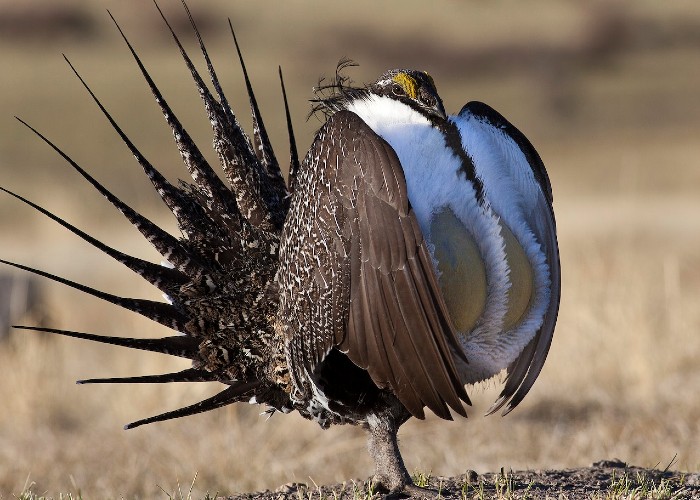Scroll Percentage: 0%
Large projects Canada 2023
Habitat restoration for the conservation of the Canadian Greater sage-grouse
Canada Conservation Facts
Alberta is blessed with a diversity of natural landscapes. This includes grassland, parkland, foothills, boreal forest, Rocky Mountains and Canadian Shield. The province is also home to over 60,000 wild species. Currently over 600 plant and animal species at risk are currently protected under the federal Species at Risk Act (SARA) and more than 150 additional species are under consideration to be added to the list.
Canada project
In partnership with the Computational Ecology Group Inc. we will help to conserve critically endangered Greater sage-grouse (Centrocercus urophasianus) in Canada, in the northern fringe of the imperiled sagebrush biome.
The project involves habitat restoration in partnership with the Computational Ecology Group Inc. This land will provide benefits in perpetuity to this critically endangered species and benefit many other native species of the region.
Canada Project Partner
The Fund manages the project in cooperation with our local partner
Computational Ecology Group Inc. (CEG)
Computational Ecology Group Inc. offers research and modeling services to help clients better understand the influences of environmental change on wildlife habitats, species, and landscapes.
Greater Sage-grouse have been at high risk of imminent extinction in Canada for over a decade. A key conservation intervention has been the translocation of grouse from Montana to Alberta, which likely helped the evidenced stabilization of this small and fragile population. Greater sage-grouse are habitat specialists which, as the name suggests, largely depend upon sagebrush for their survival and persistence.
The demise of sagebrush due to habitat deterioration as well as factors such as climate change and introduction of invasive species have all played a role in the imminent decline across Canada.
Progress in 2023 and beyond
After acquiring the land, the process of rehabilitation will commence. Two local landowners and conservation groups plan to build ‘Zeedyks’—small, low-tech rock structures— strategically placed to improve water retention to expand brood-rearing areas for Greater Sage Grouse.
A site selection tool will be built to identified potential sites for Zeedyks. By using satellite data, population information, and local knowledge, they pinpointed locations with high ecological potential and feasibility. Zeedyks will be installed in the coming months, offering sage-grouse a greener landscape.
Community engagement and outreach are also planned to secure further support from government and local stakeholders.
To the above list of planned activities for 2024 (which were already completed as of Aug. 2024), we also developed the following decision-support science products:
- Vegetation mapping and projections
- Climate vulnerability map and analysis
- Web viewer for stakeholder to plan climate-durable actions
"The funding for the sage-grouse project in Canada supported a suite of conservation activities that were instrumental in securing and restoring sage-grouse habitat. Our project was the first in Canada to install rock dams to restore wet meadows for sage-grouse, and represented the start of a new community-wide approach to sage-grouse habitat restoration. Funding for this project also supported the growth of our local small business. We were able to hire and train several new conservation practitioners who continue to facilitate restoration work, conservation planning, and the development of climate adaptation tools."
Julie Heinrichs
Managing Director, Chief Scientist
Land purchase agreement reached




